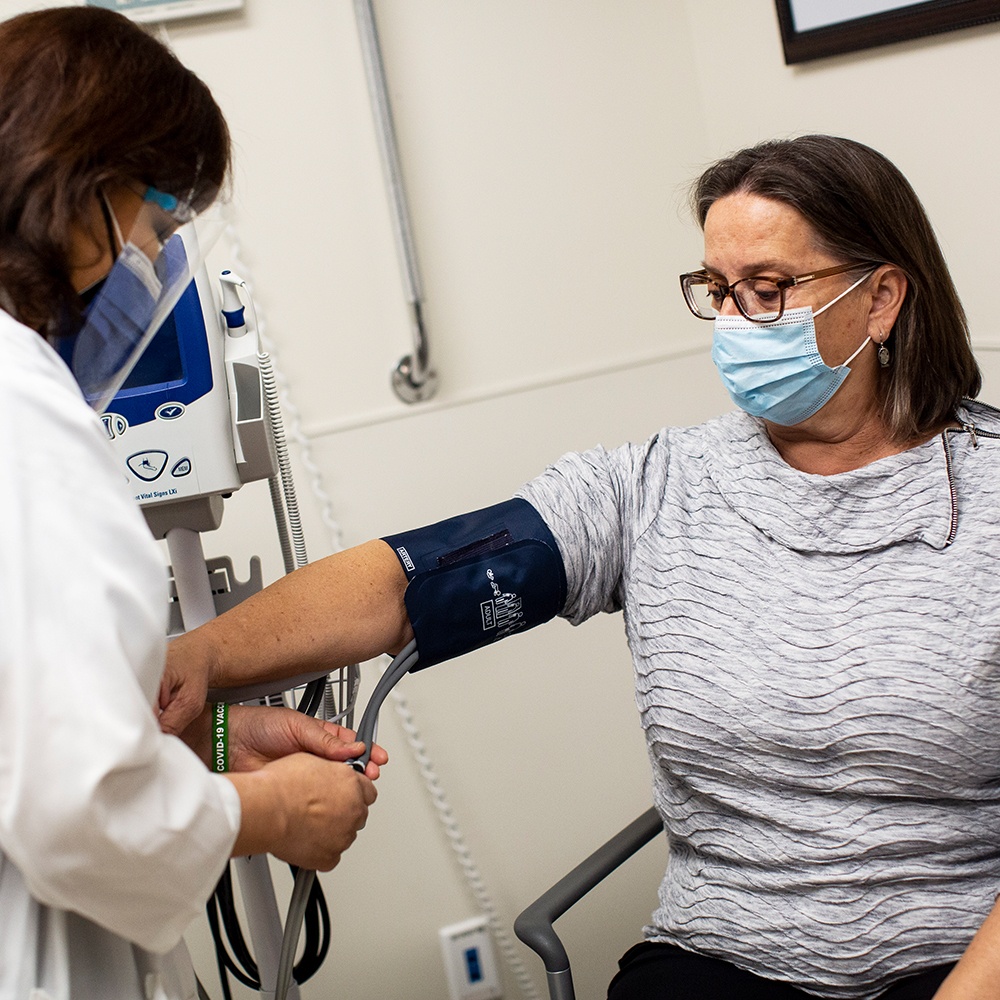Post-stroke Care

Overview
What is Post-Stroke Care?
If you’ve had a stroke, post-stroke care is important for you to relearn skills you’ve suddenly lost when part of your brain is damaged. Post-stroke care is also important to protect you from developing new medical problems such as pneumonia, urinary tract infection or injury due to a fall. Long-term effects of a stroke may include memory problems, speech difficulty, weakness, paralysis, loss of sensation and problems with grasp, walking difficulty, difficulty swallowing, depression, fatigue and trouble sleeping. Typically, a post-stroke rehabilitation team will evaluate the damage caused by your stroke as soon as possible (sometimes as early as 24 to 48 hours after your stroke), in order to quickly develop a rehabilitation plan to get you on the road to recovery and independence. Post-stroke rehabilitation will also teach you ways to compensate for any disabilities caused by your stroke.
Your post-stroke care and recovery will depend on how the stroke has affected. You may recover quickly or it may take you months or years after your stroke.
- Post-stroke care typically begins in inpatient rehabilitation units, usually situated in the hospital or a freestanding clinic. You may also be transferred to a skilled nursing facility to continue your rehabilitation.
- As you continue to make gains in your recovery, you may then transition to outpatient rehabilitation where you spend a few hours, several times each week.
- You may also continue your post-stroke care at home with specific treatment instructions as well as follow up home care visits by rehabilitation professionals.
Factors
Factors Affecting Post-Stroke Care
There are several factors that may affect your post-stroke care, including:
Risks
Managing Post-Stroke Care Risks
Post-stroke care is not just focused on your stroke recovery, but also managing underlying medical conditions such as:
Controlling your high blood pressure
Controlling your high blood pressure since hypertension is a strong risk factor for a stroke.
Stopping smoking
Stopping smoking since smoking greatly increases the risk of stroke.
High cholesterol
High cholesterol builds up plaque in blood vessels and can reduce the blood flow and oxygen to the brain.
Managing your diabetes
Managing your diabetes can delay the onset of complications that increase the risk of stroke.
Heart disease
Heart disease can result in blood clots that may break loose and travel to the brain.
Treatments
Post-Stroke Care Treatments
Priorities for post-stroke rehabilitation focus on the activities of daily living (ADL), such as bathing, dressing with just one hand, or preparing food. Since a stroke may have serious cognitive and emotional impacts on both the patient and caregivers, your rehabilitation team will create a plan to improve cognitive function and resilience to meet the challenges that could be permanent lifestyle changes. The more involvement you and your caregivers have in designing your treatment plan according to your recovery goals, the better the likelihood of a faster and more effective recovery.
Typical activities of post-stroke care include:
- Motor-skill exercises can help improve your muscle strength and coordination.
- Use of mobility aids, such as a walker, cane, wheelchair or ankle brace.
- Forced-use therapy is when an unaffected limb is restrained while you practice moving your affected limb to improve its function.
- Exercises that improve your range-of-motion.
- Electricity applied to reeducate weakened muscles by making them contract.
- Robotic devices that help impaired limbs regain strength and function by performing repetitive motions.
- Occupational therapy to help with lost cognitive abilities such as memory, problem solving, social skills and safety awareness.
- Speech therapy can help you regain the ability to speak, listen, writing and comprehension.
- Counseling and support group to help with your emotional adjustment.
- Medication, such as antidepressant or medications that affect alertness, or movement.
- Noninvasive brain stimulation, such as transcranial magnetic stimulation to help improve some motor skills.
- Alternative medical treatments, such as massage, acupuncture and oxygen therapy.
Your Saint John’s Physician Partners cardiologists understand the significant changes that a stroke can bring to your daily life. You will probably experience setbacks in your recovery, that’s why working with your doctor and your rehabilitation team is important to overcome the challenges you’re facing. Discuss the difficulties, and milestones, you are experiencing so that together, we can facilitate your recovery and independence. We’re here for you.

Specialists